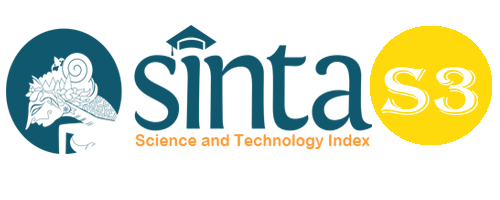An Analysis of Information Technology Governance Using COBIT 2019: A Case Study of the ICT Unit at Tadulako University
Abstract
The rapid advancement of information technology (IT) requires educational institutions to implement effective IT governance aligned with organizational business strategies and operations. This study aims to evaluate the capability level of IT governance at the Information and Communication Technology Unit (UPT TIK) of Tadulako University using the COBIT 2019 framework, with a focus on two specific processes: APO12 (Managed Risk) and APO13 (Managed Security). A mixed-methods approach was employed, including data collection through observations, interviews, and questionnaires. The Guttman scale and capability level calculations were used for analysis. The findings indicate that the current capability level for APO12 is at level 2, and APO13 is at level 1, whereas the desired target for both is level 4. This significant gap highlights the need for improvements in IT governance. Strategic recommendations based on the COBIT 2019 guidelines are proposed to help the institution achieve its target capability levels.
Keywords
Full Text:
PDFReferences
Ahmad, H., Kurniawan, R., & Indrawan, M. (2021). Comparative analysis of IT governance in the public sector using COBIT 5 vs. COBIT 2019. Jurnal Teknologi dan Sistem Informasi, 9(2), 231–240.
Alreemy, Z., Chang, V., Walters, R., & Wills, G. (2016). Critical success factors (CSFs) for information technology governance (ITG). International Journal of Information Management, 36(6), 907–916. https://doi.org/10.1016/j.ijinfomgt.2016.05.017
Dull, R. B., & Gelinas, U. J. (2008). Accounting information systems (8th ed.). South-Western College Pub.
ISACA. (2012). COBIT 5: A business framework for the governance and management of enterprise IT. ISACA.
ISACA. (2018). COBIT 2019 framework: Governance and management objectives. ISACA.
ISACA. (2019). COBIT 2019 design guide: Designing an information and technology governance solution. ISACA.
Komarudin. (1994). Kamus Istilah. Jakarta: Bumi Aksara.
Lunardi, G. L., Becker, J. L., Maçada, A. C. G., & Dolci, P. C. (2014). The impact of IT governance on organizational performance. Journal of Information Systems, 28(1), 67–81. https://doi.org/10.2308/isys-50635
Nasution, R. A., Siahaan, A. P. U., & Sitorus, S. (2021). Evaluation of information technology governance using COBIT 2019 at a government hospital. International Journal of Advanced Computer Science and Applications, 12(6), 498–505.
Sudjana, N. (2016). Dasar-dasar proses belajar mengajar. Bandung: Sinar Baru Algensindo.
Swastika, D. (2016). Tata kelola teknologi informasi pada perguruan tinggi. Jurnal Teknologi Informasi dan Komunikasi, 4(1), 10–16.
Weill, P., & Ross, J. W. (2004). IT governance: How top performers manage IT decision rights for superior results. Harvard Business Press.
Weill, P., & Vitale, M. R. (2002). What IT infrastructure capabilities are needed to implement e-business models? MIS Quarterly Executive, 1(1), 17–34.
DOI: https://doi.org/10.33258/birci.v8i3.8102
Article Metrics
Abstract view : 0 timesPDF - 0 times
Refbacks
- There are currently no refbacks.

This work is licensed under a Creative Commons Attribution-ShareAlike 4.0 International License.

This work is licensed under a Creative Commons Attribution-ShareAlike 4.0 International License.

_.gif)

















_.gif)



